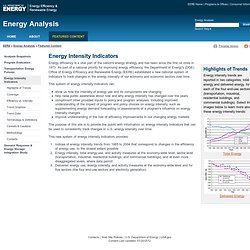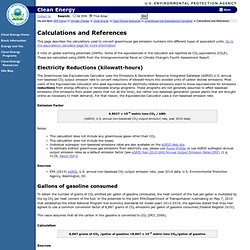

Units of Measurement. For information on a specific unit, click on the first letter of its name: Commentary and Explanation The International System of Units (SI) The International System of Units Base and derived units; other units included (and some that are not included).

Defining the Base Units Current and proposed definitions for the second, meter, kilogram, ampere, mole, kelvin, and candela. SI Derived and SI Compatible Units 22 derived units that are in the SI, and 10 more that aren't. Metric and SI Unit Prefixes From yotta- (septillion) to yocto- (septillionth). Using Numbers and Unit Symbols in Measurements SI rules for numbers (decimal markers, digit grouping, etc.) and the SI rules for handling unit symbols. The Long Road to the SI English Customary Weights and Measures A brief account of a long (but fascinating) history. The Metric System A new idea -- now more than 200 years old. CGS and MKS Units. Intensity Indicators: Terminology and Definitions. Energy intensity trends are reported in two categories, total energy and delivered energy, for each of the four end-use sectors (transportation, industrial, residential buildings, and commercial buildings).

Select the images below to learn more about these energy intensity trends: Total Energy Delivered Energy Energy efficiency is a vital part of the nation's energy strategy and has been since the first oil crisis in 1973. As part of a national priority for improving energy efficiency, the Department of Energy's (DOE) Office of Energy Efficiency and Renewable Energy (EERE) established a new national system of indicators to track changes in the energy intensity of our economy and economic sectors over time. This system of energy intensity indicators can: The purpose of this site is to provide the public with information on energy intensity indicators that can be used to consistently track changes in U.S. energy intensity over time.
Engineering & Scientific Links - Calculators. Periodic Table of Elements: Los Alamos National Laboratory. Convert just about anything to anything else. Calculations and References. This page describes the calculations used to convert greenhouse gas emission numbers into different types of equivalent units.

Go to the equivalency calculator page for more information. A note on global warming potentials (GWPs): Some of the equivalencies in the calculator are reported as CO2 equivalents (CO2E). These are calculated using GWPs from the Intergovernmental Panel on Climate Change’s Fourth Assessment Report. Electricity Reductions (kilowatt-hours) The Greenhouse Gas Equivalencies Calculator uses the Emissions & Generation Resource Integrated Database (eGRID) U.S. annual non-baseload CO2 output emission rate to convert reductions of kilowatt-hours into avoided units of carbon dioxide emissions. Emission Factor 6.8927 × 10-4 metric tons CO2 / kWh (eGRID, U.S. annual non-baseload CO2 output emission rate, year 2010 data) Notes: This calculation does not include any greenhouse gases other than CO2. Sources Gallons of gasoline consumed Calculation Passenger vehicles per year Calculation.